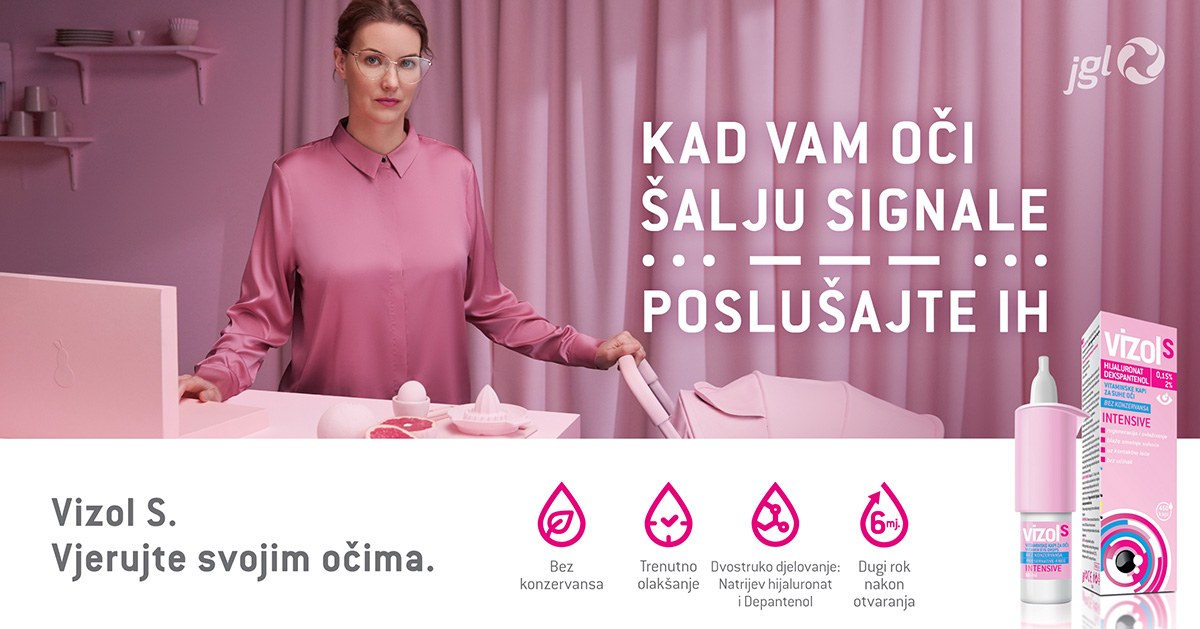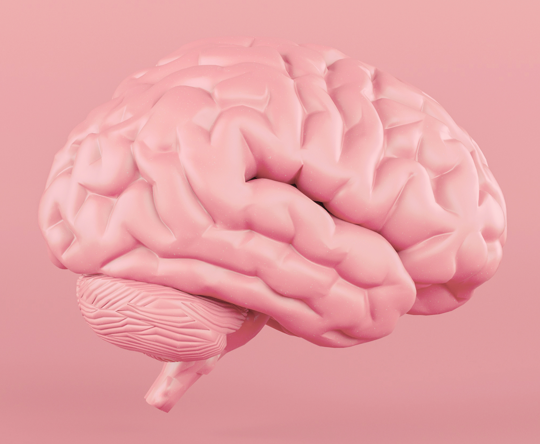Find out what light is the most pleasing to our eyes, what to look out for and how to protect yourself to improve your eye health
Natural light is the most pleasing to our eye. Spending time in daylight for about 30 minutes a day stimulates the production of serotonin and vitamin D, which is sufficient for long-term health and for your body to function normally. Being exposed to daylight for least one hour has been shown to reduce the onset and progression of myopia in children. It is recommended by Edita Kondža Krstonijević, MD, ophthalmologist at University Hospital Centre “Sveti Duh.” We receive as much as 90 percent of the information from our environment through our eyes. The eye muscles can work tirelessly day and night and, along with the heart, they are the fastest and most loaded muscles in the body, and we need to protect them. The World Health Organization estimates that out of the 2.2 billion people suffering from eye diseases worldwide, for at least a billion of them the disease could have been prevented.
Thanks to the eyes, it is possible to detect diseases in other systems — the eyes can show us symptoms of diabetes, high blood pressure or rheumatic diseases. Apart from aging and genetic predispositions, eye health is influenced by many other factors over which we have control ourselves, thus preventing disease and improving our health. This is why leading ophthalmologists, neurologists, endocrinologists, psychiatrists, rheumatologists, otorhinolaryngologists, plastic surgeons, general practitioners, pharmacists and engineers are brought together at X-Lab — the expert research hub by JGL — to analyse the latest research and, by applying a holistic approach, to share with us how to take care of our eye health and why that is important for our whole bodies.
1 What light sources are our eyes exposed to on a daily basis and how does this affect our vision?
When we talk about mobile phones, tablets, computer monitors and televisions, the influence of blue light emitted by these devices is what usually gets mentioned. Blue light penetrates the deeper layers of our eye, the retina, and long-term exposure to blue light can have negative effects on vision.
Blue light is part of the visible part of the spectrum of light that our eye perceives –380 to 500 nanometres in wavelength with high energy. Sunlight is the strongest natural source of blue light, which is necessary for an individual’s normal circadian rhythm, regulating sleep and wakefulness which is important for physiological and psychological functions. Artificial blue light is less intense than the natural one, but we are exposed to it for longer durations during the day, at a distance closer to the eye, as well as indoors. Prolonged exposure leads to eye fatigue known as ‘digital eyestrain.’ Artificial blue light disrupts the circadian rhythm because our retinal cells secrete melanopsin when exposed to blue light, which suppresses the secretion of melatonin required for sleep
2 Can we look directly at the Sun?
Looking directly at the sun, even very briefly, can cause damage to the eye. If you try to look at the Sun, you will notice that it is difficult and unpleasant. The strong glare makes us avert our eyes and our pupils to narrow, which is the eye naturally protecting itself. People who sungaze experience phototoxic and thermal damage to the central part of the retina called solar maculopathy. Most of the damage to the eye clears on its own within six months to a year, but in some cases the vision is never completely repaired. There are solar eclipse glasses that are ISO-standard approved for observing a solar eclipse because ordinary sunglasses are inadequate, as are other types of optical instruments. When we talk about the sun and overexposure, there are also UV rays from which we need to protect our eyes as well, not just our skin. The long-term, cumulative effects of UV rays on the eye are manifested in the occurrence of cataracts, pterygium, and macular degeneration. UV rays reflected from water surfaces, from snow, ice or sand can also lead to direct damage to the eye surface, photokeratitis or corneal burns, which is extremely painful and uncomfortable, but full recovery is possible.
3 What light is the most pleasing to the eye?
Natural light is the most pleasing to our eyes. Spending time in daylight for about 30 minutes a day stimulates the production of serotonin and vitamin D, which is sufficient for long-term health and your body to function normally. Being exposed to daylight for least one hour has been shown to reduce the onset and progression of myopia in children. Nowadays, we are increasingly exposed to artificial lighting, but there is no ideal solution to replace natural light. When we talk about artificial lighting, in addition to the brightness measured in lumens, the indicator K can be found on the light sources, which indicates the colour temperature of the light source. We have light sources ranging from 1800 K (warm lights) to 6500 K (cold lights). The higher the K value, the more blue light the light source contains. Therefore, we will choose a cold light source with a higher K value (3000 to 6500 K) for daily activities, workplace or school lighting when we need more focus, and warm light (up to 3000 K), for example, for bedtime reading. Recently, smart bulbs have been produced, which adapt to the specific room conditions and can be changed from warm to cold through an app.
4 How to distinguish between eye discomfort and symptoms which require medical attention?
It is sometimes difficult to assess whether it is just eye fatigue or if the cause of the disorder is an eye disease. If we use an appropriate type of glasses for work, or even goggles with yellow lenses that block out blue light, have proper lighting in the workspace and on the digital devices we work on – and still we notice blurred vision or a distorted image, intermittent flashes or disappearances or any other uncommon occurrences, it is recommended to consult your doctor. Eye redness can be caused by irritation or prolonged staring at screens, but after a short rest it should disappear spontaneously. We can always use artificial tears as a first aid for discomfort and fatigue in the eyes, but if the disturbances last longer, an ophthalmological examination is needed.
5 What to look for and how to best protect yourself to improve eye health?
Natural sunlight is essential for good health, and adults should be exposed to it for a minimum of 30 minutes a day. Normal eye growth in children requires one to three hours of exposure to daylight.
Adults, and children in particular, are sensitive to excessive exposure to UVA and UVB rays, so they need protective layers (polarization) on the glasses they’re using or they need sunglasses with UV filters. Never look directly at the sun.
The skin around the eyes and face should be protected with special UV protection sun cream, and your head should also be protected. We are exposed to blue light through monitors, mobile phones, LED lights, TVs and laptops, – the brightness on these should be adjusted and the blue light filter should be turned on. It is recommended, especially for children, not to be exposed to blue light sources for at least one to two hours before going to bed to maintain a normal sleep rhythm. When working on a computer or mobile phone, it is important to take a break and look into the distance and rest your eyes every 20 minutes for a few minutes.
QUIZ
SUFFERING FROM DRY EYE SYNDROME? ANSWER THESE QUESTIONS AND FIND OUT HOW TO PREVENT IT AND WHAT TO DO WHEN YOU ARE ALREADY FEELING THE SYMPTOMS
QUIZ





